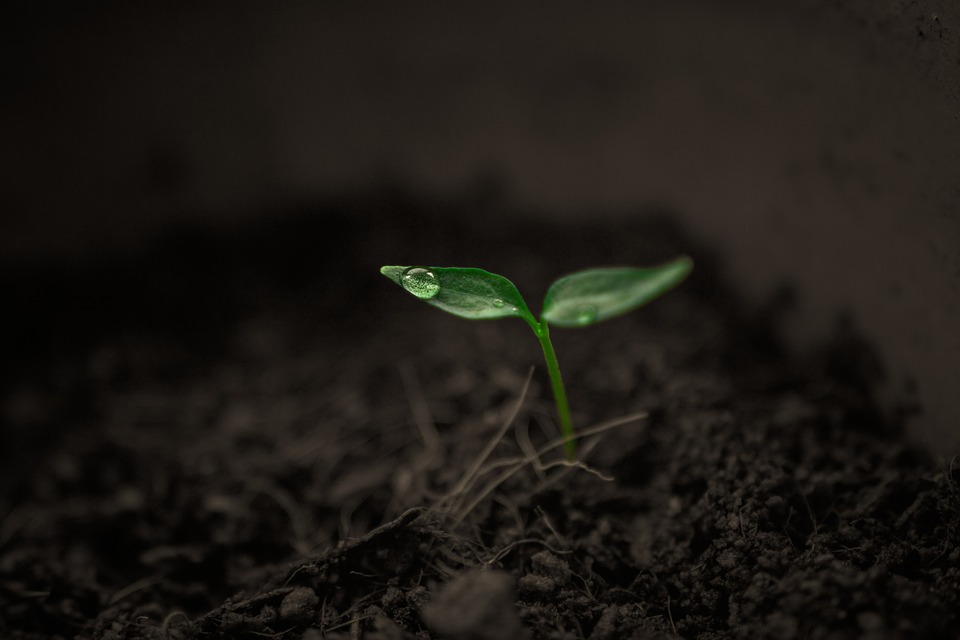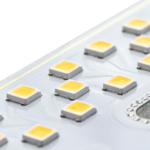When it comes to indoor cultivation, there is hardly a topic that is as emotionally charged as lighting. Spectra, wattage, high-end chips, etc. - when talking shop about grow lamps there is unfortunately a lot of half-knowledge and humbug.
In this blog entry we want to clear up the most common misunderstandings. There are dubious providers on the market who profit from misinformation - but we want enlightened customers with informed decisions. Most of them will already have come across dubious offers for LED Grow lamps - so there is no need to point the finger at individual market participants. Most readers will know which offers are meant here.
Myths and legends
Myth 1: Lumens are a good comparison value
What may be true for general lighting is a myth when it comes to plant lamps. Fortunately, most people now know that the SI unit lumen is weighted according to the sensitivity of the human eye. If you look at the V-Lambda curve, you immediately realize that in lumen measurements blue and red light is underestimated, while green and yellow light gets an unfair advantage. All wavelengths between 400 and 700 nm are relevant for photosynthesis. A frequently mentioned note in English is Lumens are for humans!

Myth 2: PPFD shows the efficiency of the plant lamp
Uncertainty about the appropriate comparative values is often exploited. PPFD is actually a relevant value for plant lighting. However, it is often mistakenly used to compare different plant lamps. However, PPFD in µmol/m²s is a measuring unit intended for practical use. It is used to check how well a plant lamp is able to illuminate a specific area of cultivation - and not only the light source itself is decisive. In particular, the installation (height) and the nature of the room (mounting surface, reflective materials, etc.) play a major role. Because everyone measures differently and most manufacturers or testers only partially disclose the boundary conditions, a neutral comparison is virtually impossible. The tendency to use PPFD as a comparative value is understandable. Not every manufacturer is able to perform expensive and complex tests in an integrating sphere. Therefore it is very tempting to put one's own products in a better light by manipulating the test environment or to make comparisons more difficult.

Myth 3: Full spectrum is the only true

After the "blurple" light fell into disrepute due to many cheap products and white LEDs became more and more efficient for general lighting, a consensus has emerged: White full-spectrum plant lamps were absolutely superior.
As is so often the case with myths, there is indeed a spark of truth behind them - but the whole story must be viewed in a more differentiated way. There are many studies and theories that contradict each other, as the effect of different light spectra on plants is far from being sufficiently researched.
What has been proven, however, is that red and blue wavelengths may well be sufficient to enable healthy plant growth. This spectrum has proven to be particularly advantageous at low intensities and for simple cultivars, such as salad plants, because light in the red and blue wavelengths can be produced very easily and efficiently.
However, the situation appears to be different when high light intensities are required, for example in the flowering stage of many plants. One theory suggests that the chloroplasts on the leaf surface then tend to saturate and only green light penetrates far enough to enable more photosynthesis. Whether full spectrum white light is really needed therefore depends on the application.
Myth 4: Power consumption for lamp comparison
What is legitimate with NDL and other high-pressure discharge lamps shines, is usually a fallacy with LEDs. Because the bandwidth of different efficiency classes is enormous with LEDs. So there are definitely LEDs that provide less light per watt than the classic NDL. On the other hand modern, high-quality copies double the output per watt.

Myth 5: A 180 W LED replaces 600 W NDL
Caution is also advised when making comparisons with traditional light sources. Product descriptions such as "600 W LED Grow Light" are often found on the large online marketplaces. Such products from the Far East are already available for less than 100 € and are deceptive in two ways: First, it is suggested that the device has such a high power consumption - if you then read more closely under the technical specifications, the actual power consumption is usually significantly lower - less than a third is quite common. Later it is explained that the "600 W LED Grow Light" can replace a sodium lamp with 600 W - the title is thus unmasked as marketing. That a 180 W LED lamp should be able to do this, however, seems to contradict the laws of physics. The most efficient LEDs currently cause about 50% less power consumption than a standard NDL.
Myth 5 ½: Power consumption of LEDs and chips
Since we're already on Amazon and Ebay, the ubiquitous advertising claims that so many 5 watt or 3 watt LED chips are used should not remain unmentioned. Background is that LEDs are provided with a "Maximum Rating" by the manufacturer, which indicates the maximum permissible power consumption of the LED. In real luminaire designs, these high values can usually not be realized for several reasons (decrease in efficiency, cooling, more expensive power supply etc.). Unfortunately, this does not stop the marketing geniuses on Amazon and Ebay from using it to promote your product and fool unsuspecting customers.
Conclusion
It should be clear to every indoor gardener what factors are involved in comparison of plant lamps are relevant. Unfortunately not everyone has the Previous knowledge and the time to get to grips with the subject of plant lighting ...to keep you busy. This leads to the fact that many buyers from dubious manufacturers with pseudo-objective indicators. Knows You still more such myths, which are used in product descriptions and professional forums be spread? Let us know, we'll be happy to clarify the matter and hopefully save one or two people from making a bad buy.








2 thoughts on “Mythos Pflanzenlampen”
Hi... I'm new to the Crescience community, my ranger900 is on its way to me... It would be great to be able to ask people who use the same technology and share their experiences of using the ranger in case of any problems....
I would be interested in improvements, especially with regard to heat management...
See you soon...
Hi Lazerus,
Thank you for your order and have fun with the Ranger 900. If you have any questions, you can always contact us directly. Regarding heat management: The Ranger reaches temperatures of approx. 55°C during operation, which is actually not critical. However, additional cooling is always good. You can achieve this, for example, by pointing fans at the heat sinks or increasing the surface area of the heat sinks.
Many greetings
Your Crescience Team